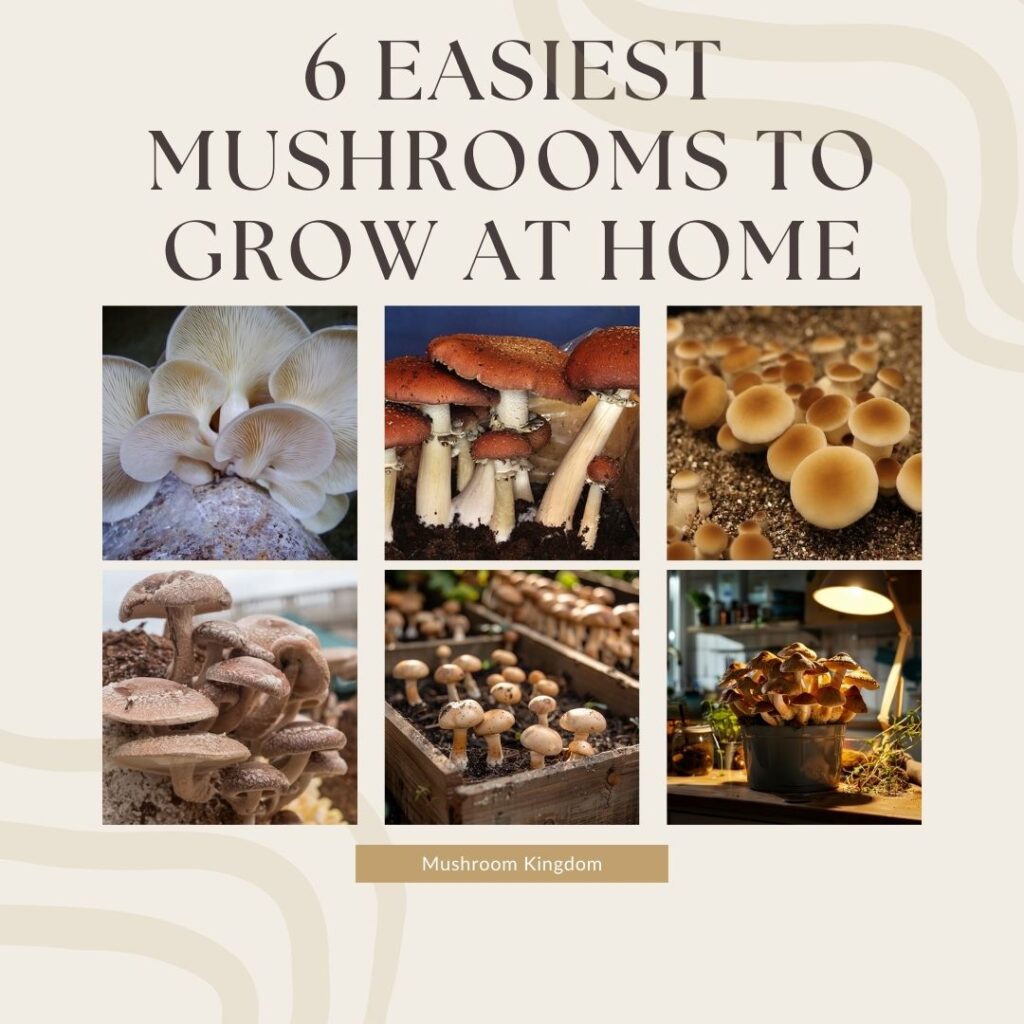Mushrooms sprouting in your yard might raise a few eyebrows. You might wonder whether these fungi are harmful or beneficial. Understanding what causes mushrooms to grow in your yard can help you manage them effectively and even appreciate their role in the ecosystem.
What Causes Mushrooms to Grow in Your Yard?
Mushrooms are the fruiting bodies of fungi, an often overlooked but crucial part of the natural world.
They emerge from a network of microscopic threads called mycelium, which spread throughout the soil or organic matter.
The primary factors that trigger mushroom growth in your yard include moisture, organic material, and specific environmental conditions.
Moisture: The Catalyst for Mushroom Growth
Mushrooms thrive in moist environments. After a period of heavy rainfall or frequent watering, your lawn provides the ideal conditions for mushrooms to sprout.
The moisture allows the mycelium to absorb nutrients and expand, eventually leading to the formation of mushrooms. Therefore, if your yard has poor drainage or areas that retain water, mushrooms are likely to appear.
Organic Material: The Food Source
Fungi feed on organic material, such as decaying leaves, grass clippings, and wood debris.
A yard rich in organic matter serves as a buffet for fungi, encouraging mushroom growth. If you frequently leave yard waste or use organic mulch, you’re essentially inviting mushrooms to thrive.
This is why compost piles or areas with dead tree roots often host a variety of mushrooms.
Environmental Conditions: The Perfect Storm
Mushrooms require a combination of specific environmental conditions to grow. These include a suitable temperature range, humidity, and low light levels.
Many mushrooms favor cooler temperatures and tend to sprout in spring or fall. A shaded, damp area in your yard creates a perfect microclimate for mushroom growth.
Which Mushrooms Typically Grow In Your Yard?
Mushrooms that grow in lawns and yards are diverse, ranging from beneficial fungi to potentially harmful species.
Recognizing these varieties helps you understand their role in your yard and how to manage them effectively. Here are some common types of mushrooms you might find:
1. Fairy Ring Mushrooms
Fairy ring mushrooms are often the most noticeable in lawns. These mushrooms form circular patterns, known as fairy rings, which can expand over time.
They typically belong to species such as Marasmius oreades and Agaricus campestris. Fairy rings can either enhance the soil by breaking down organic matter or sometimes create unsightly dead patches of grass.
2. Puffballs
Puffballs, including species like Calvatia and Lycoperdon, are usually harmless and can vary in size. They start as small, round mushrooms that can grow into large, white spheres.
When mature, they release a cloud of spores if disturbed. Puffballs are often found in nutrient-rich soil, decomposing organic material and contributing to soil health.
3. Inky Caps
Inky caps, such as Coprinus and Coprinellus species, are distinctive for their cap shape and their tendency to dissolve into a black, inky liquid as they mature.
They often grow in clusters and prefer nutrient-rich environments, particularly areas with decaying wood or plant material. They help break down complex organic compounds, enriching the soil.
4. Chlorophyllum molybdites (Green-spored Parasol)
Chlorophyllum molybdites is a large, common mushroom often found in lawns.
It has a white cap with greenish spores and can cause severe gastrointestinal distress if ingested. Despite its attractive appearance, it’s crucial to remove these mushrooms to ensure the safety of pets and children.
5. Agaricus Species (Field Mushrooms)
Agaricus species, like Agaricus campestris (the common field mushroom), are often found in well-fertilized lawns.
They have white caps with pink or brown gills and are generally safe, though some species may cause mild gastrointestinal upset if not correctly identified.
6. Boletus and Suillus Mushrooms
Boletus and Suillus mushrooms often grow under trees and can appear in yards with plenty of leaf litter or organic material.
They have a sponge-like underside instead of gills and can vary in color. These mushrooms are usually harmless and indicate a healthy ecosystem.
7. Galerina Marginata
Galerina marginata is a small, brown mushroom that often grows on decaying wood and can sometimes appear in mulched areas of your yard. This mushroom is highly toxic and should be removed promptly if found.
8. Mycorrhizal Mushrooms
Mycorrhizal mushrooms, such as Laccaria and Russula species, form symbiotic relationships with plant roots.
These mushrooms often grow near trees and plants in your yard, aiding in nutrient exchange and improving soil health. They are typically harmless and beneficial to the ecosystem.
Why Do Mushrooms Grow in Grass?
Seeing mushrooms dotting your lush green lawn can be perplexing. However, their presence indicates specific conditions in your grass that support fungal growth.
Symbiotic Relationships
Certain fungi form symbiotic relationships with the roots of grass and other plants.
These fungi, known as mycorrhizae, aid in nutrient absorption and enhance the health of your grass. In return, they receive carbohydrates produced by the plant.
This mutualistic relationship can lead to mushrooms sprouting in your lawn, especially if your grass is well-fertilized and healthy.
Grass Clippings and Organic Debris
Grass clippings and other organic debris left on your lawn provide an ample food source for fungi.
As these materials decompose, they release nutrients that fungi thrive on, promoting mushroom growth. Raking your lawn regularly and removing excess debris can help reduce the chances of mushrooms appearing.
Soil Compaction and Drainage Issues
Mushrooms often grow in areas where the soil is compacted or poorly drained. Compacted soil restricts water flow, creating damp conditions that favor fungal growth.
Addressing soil compaction through aeration and improving drainage can help mitigate mushroom growth in your grass.
Are Mushrooms in Your Lawn Good or Bad?
The appearance of mushrooms in your lawn can be a double-edged sword. On one hand, they play a beneficial role in your yard’s ecosystem. On the other hand, they might pose some concerns.
Benefits of Mushrooms
- Soil Health: Mushrooms contribute to soil health by breaking down organic matter and releasing nutrients back into the soil. This process improves soil structure and fertility, promoting healthy plant growth.
- Decomposition: Fungi decompose dead plant material, helping to recycle nutrients and maintain the balance of the ecosystem in your yard.
- Biodiversity: The presence of mushrooms indicates a diverse and healthy soil ecosystem. A variety of fungi can support different plants and animals, contributing to a balanced environment.
Potential Drawbacks
- Toxicity Concerns: Some mushrooms are toxic and can pose a risk to pets and children if ingested. It’s crucial to identify the types of mushrooms in your yard and remove any that are potentially harmful.
- Aesthetic Issues: Mushrooms can disrupt the appearance of a manicured lawn. While some people appreciate their presence, others may find them unsightly and prefer to remove them.
- Disease Indicators: In some cases, mushrooms may indicate underlying problems such as decaying tree roots or excessive moisture, which might need to be addressed to prevent further issues.
How to Manage Mushroom Growth in Your Yard
If you find mushrooms in your yard undesirable, there are several steps you can take to manage their growth effectively.
Regular Lawn Maintenance
Maintaining your lawn properly can help prevent mushroom growth. Regular mowing, raking, and aeration reduce organic debris and improve soil conditions, making your yard less hospitable to fungi.
Ensuring proper drainage and avoiding overwatering are also crucial in preventing mushroom proliferation.
Removing Organic Debris
Promptly remove grass clippings, fallen leaves, and other organic debris from your yard.
This reduces the food source for fungi and helps keep mushroom growth in check. Composting organic matter away from your lawn can also help manage mushroom populations.
Improving Soil Health
Enhancing your soil’s health through proper fertilization and organic amendments can reduce the likelihood of mushroom growth.
Healthy soil supports a balanced ecosystem that discourages the overgrowth of any single organism, including fungi.
Addressing Underlying Issues
Mushrooms often indicate underlying problems such as excessive moisture or decaying tree roots.
Addressing these issues, such as improving drainage or removing decaying material, can help manage mushroom growth.
Consulting with a professional arborist or lawn care specialist can provide targeted solutions for your specific situation.
Identifying and Removing Toxic Mushrooms
While many mushrooms are harmless, some can be toxic. Learning to identify common toxic mushrooms can help protect your family and pets.
Common Toxic Mushrooms
- Amanita Species: These mushrooms often have a distinctive cap and can be highly toxic. They should be removed immediately if found in your yard.
- Galerina Marginata: Known for its small size and brown color, this mushroom is highly poisonous and should be handled with caution.
- Chlorophyllum Molybdites: Often found in lawns, this mushroom can cause severe gastrointestinal distress if ingested.
Safe Removal Practices
When removing mushrooms, wear gloves to avoid direct contact. Dispose of them in a sealed bag to prevent spores from spreading. Avoid mowing over mushrooms, as this can disperse spores and lead to further growth.
Final Thoughts On What Causes Mushrooms to Grow in Your Yard?
Mushrooms in your yard are a natural phenomenon that reflects the health and balance of your ecosystem.
Understanding what causes mushrooms to grow in your yard and how to manage it effectively can help you appreciate their role in your yard.
Whether you choose to embrace or remove them, mushrooms provide valuable insights into the conditions of your lawn and the intricate web of life beneath your feet.


